SOUTH AFRICA
Economy

Economy
Cities in SOUTH AFRICA
| Cape town | Johannesburg |
Economy
General
The development of the modern economy is strongest in the industrial heart of South Africa, South Transvaal, which started with the discovery of minerals there, including gold and diamonds, since the late 19th century. Due to the presence of sea ports, other important industrial areas are Durban, Port Elizabeth and the Western Cape.
To prevent many blacks from migrating to the white developed areas, the government also sought to provide economic support to the black homelands. This policy largely failed and, moreover, the industrial centers needed more and more (cheap) labor. Both attempts were made to solve this problem by establishing new industries just across the borders of the home countries, the so-called "border cutting industry".
Before World War I, there was only some mining. Only after the First World War, industry, strongly stimulated by the government, started to develop well. This was also done to prevent the threat of foreign domination of the industry and to build a real Afrikaner industry.
Between 1945 and 1970, the entire South African economy, except agriculture, experienced constant strong economic growth and Gross National Product (GDP) grew by 76% between 1960 and 1970. Very important for South Africa as a gold producing country is of course the price of gold on the world market and acts as the engine for the economy, but causes a lot of economic problems when prices fall.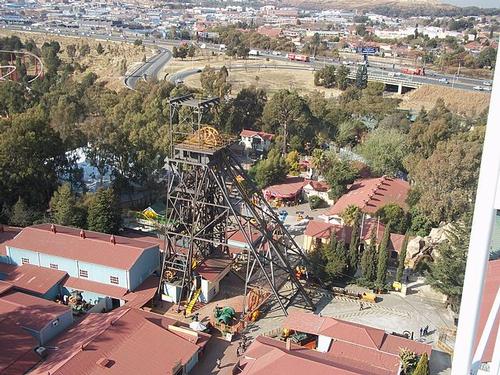 Gold Reef City Gold MinePhoto: Nolween CC 3.0 Unported no changes made
Gold Reef City Gold MinePhoto: Nolween CC 3.0 Unported no changes made
In the early 1970s, the South African economy was severely troubled by the global economic recession and foreign economic sanctions following the 1976 Soweto massacre. The cost of the oil embargo alone cost South Africa at least $ 25 billion and economic growth did not exceed 2% in the years between 1975 and 1988. All kinds of government measures did not make much difference, and even today economic power is still in the hands of a few multinationals.
The economic inequality in the country also means that millions of mainly black people live below the poverty line. Yet South Africa has the potential to grow economically, but everyone should benefit from it. Excessive differences in the income distribution between whites and blacks inevitably create great tensions between the two populations and pose a great threat to political and economic stability.
Since 1995, when economic isolation has come to an end, GDP has seen real growth, driven by high optimism, high expectations and effective new foreign investment. Exports also picked up again, but domestic demand also increased rapidly, which threatened to reduce the balance of payments surplus. In general, government policy is aimed at increasing economic growth, rather than redistributing it equally among whites and blacks. And to create a healthy economy, much more will have to be invested abroad. South Africa has turned into an emerging market in the 21st century. The country's modern infrastructure supports relatively efficient distribution of goods to the major urban centers in the region. However, the unstable electricity supply is slowing growth. The global financial crisis lowered commodity prices and global demand. GDP declined in 2009, but has recovered since then, albeit slowly, with growth estimated at around 1.3% in 2017. South Africa's economic policy has focused on controlling inflation, but the country has significant budget deficits that limit its ability to deal with pressing economic challenges. The current government is facing increasing pressure from interest groups to use state-owned enterprises to provide basic services to low-income areas and increase job growth.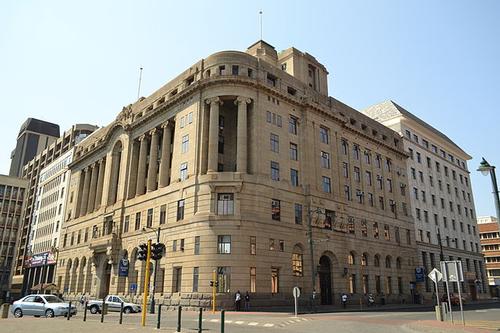 Building of the Standard Bank in Church Street, Pretoria South AfricaPhoto: PHParsons CC 3.0 Unported no changes made
Building of the Standard Bank in Church Street, Pretoria South AfricaPhoto: PHParsons CC 3.0 Unported no changes made
The South African economy is by far the largest in the African continent. In 2017, the workforce comprised approximately 22.2 million people who mainly work in mining, industry and services. About 27.5% of the labor force is unemployed according to official figures; in reality, this number is very likely to be much higher, especially among the black population. Due to the high unemployment, the black population tries to meet her needs in all sorts of ways. This informal sector, which is getting bigger and more important, consists for example of selling fruit and vegetables, pottery, making mats and baskets, taxi companies. A problem is the many illegal immigrants from Swaziland, Lesotho, Mozambique, Zimbabwe, Botswana and Malawi. Due to the very low wages they receive, they pose a threat to South African workers.
South Africa's economy is ambiguous. The modern developed economy in and around some large cities contrasts sharply with the many underdeveloped areas where practically only one type of survival agriculture is concerned. Some black townships and former homelands likely employ 80% of the labor force.
Agriculture, fisheries and forestry
Agriculture is the predominant activity outside the four major population agglomerations. Once again there is the contradiction between modern "white" agriculture and "black" agriculture that purely meets one's own needs. In addition, a large part of South Africa's agricultural land is owned by white farmers, making the opportunity to build an independent life virtually nil. In the good harvest years, South Africa is one of the few countries in the world that exports more food than its import goods.
Slightly more than 10% of South Africa's total area is used for agriculture, which is highly dependent on physical and geographical conditions. The extremely dry periods in the 1980s and 1990s therefore had major negative consequences for agriculture.
Government policy is aimed at exporting agricultural surpluses via subsidies and selling important public food such as maize cheaply to the masses. Other important products are sunflower and cotton seeds, tobacco, groundnuts, sugar and citrus fruits, certainly also for export.
The west of the Cape Province is of great importance for viticulture. South African wine can be found on more and more shelves of European supermarkets and is highly appreciated by connoisseurs.
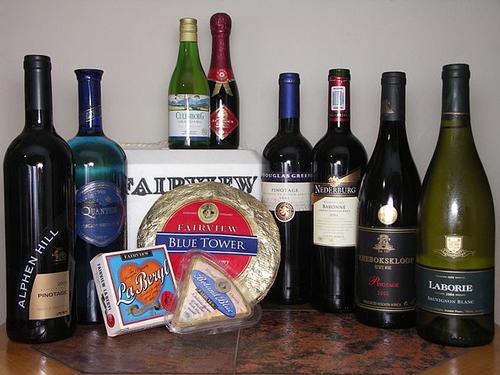 South African winePhoto: NJR ZA CC 3.0 Unported no changes made
South African winePhoto: NJR ZA CC 3.0 Unported no changes made
Sheep farming is the most important part of livestock farming. But beef and pork, poultry, eggs and wool are also important products.
Fishing mainly consists of catches of cod, anchovies, sardines and mackerel. More than one million tons of fish are caught on the west coast of the Atlantic every year.
Forestry employs approximately 100,000 people and approximately 1% of the territory is forested. The economically most important types of wood are acacia and eucalyptus. Stinkwood is one of the most expensive furniture woods in the world.
Mining
Mining is the second most important sector for the economy. Of the sixty mined raw materials, gold is still the most important mining product, despite declining production due to the depletion of various mines, among other things.
More than three quarters of the country's energy supply depends on coal, and South Africa is also one of the largest exporters of coal.
South Africa is also the world's largest producer of platinum metals in particular, as well as vanadium, chromium and andalusite. The country is also an important producer of diamonds, asbestos, fluorine fir, iron, lead, manganese, antimony, nickel, uranium and vermiculite.
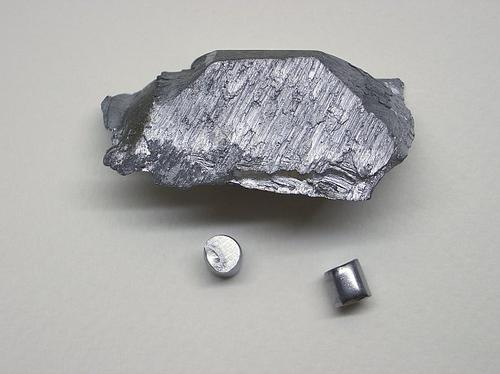 South Africa is a an important producer of vanadiumPhoto: W. Oelen CC 3.0 Unported no changes made
South Africa is a an important producer of vanadiumPhoto: W. Oelen CC 3.0 Unported no changes made
Industry
Unlike most other African countries, industry occupies an important place in the economy. There are still (semi-) state-owned companies that, however, are being privatized at a rapid pace. Main industrial area is South Transvaal and further the Western Cape, Durban and environs and Port Elizabeth / Uitenhage. The main sector is the iron and steel industry, as well as the car assembly companies and the manufacture of car tires, the food and chemical industry. Weapons are also an important export product. In three large factories, an estimated 20% of the national petroleum needs are derived from the production of coal oil. Sasol has developed an extensive chemical industry and supplies, among other things, ammonium sulphate, tar, wax, solvents, plastics, synthetic rubber and gas.
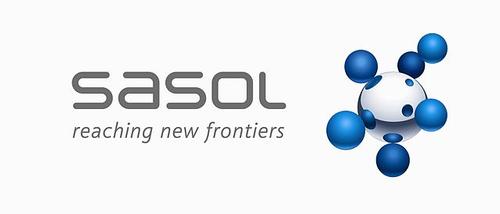 Logo Sasol, South AfricaPhoto: RitaLPGarcia CC 3.0 Unported no changes made
Logo Sasol, South AfricaPhoto: RitaLPGarcia CC 3.0 Unported no changes made
Since the Regional Industrial Development Policy became the starting point for industrial policy in 1982, decentralization has been of paramount importance. However, this development was limited to a few areas.
The economic outlook for industry is not good: dependence on exports of primary raw materials is high, employee training and productivity are low, while technological development is very limited.
Energy supply
The South African situation also provides a remarkable picture of the energy supply. On the one hand, while South Africa is Africa's largest electricity producer and exporter, more than 20 million South Africans do not have electricity. They often only depend on firewood. Nuclear energy and hydropower also make a substantial contribution to the production of South African electricity.
Trade
South Africa is highly dependent on international trade. Imports are mainly machines, vehicles, petroleum and chemical products. Imports totaled $ 89.4 billion in 2017, and the main import partners are China, Germany, Saudi Arabia and the United States. Exports include agricultural products and minerals. The main export partners are China, the United States, Japan and Germany. Total export value in 2017 was $ 94.9 billion.
South Africa is in a customs union with Botswana, Lesotho, Swaziland and Namibia.
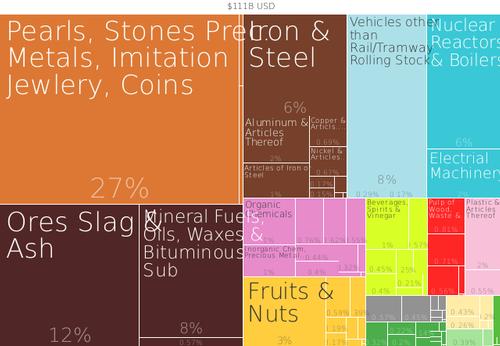 Export South-AfricaPhoto: R. Haussmann, Cesar Hidalgo, et.al., CC3.0 no changes made
Export South-AfricaPhoto: R. Haussmann, Cesar Hidalgo, et.al., CC3.0 no changes made
Traffic
South Africa has an extensive and well-maintained road network. Part of this falls under the responsibility of the central government and part falls under the provincial governments.
The rail network is partly electrified. However, a large part has been put out of operation, which has reduced the length from 34,000 to 21,500 kilometers. Some rail lines, mainly for freight, are operated by private companies.
The largest port in Africa is Durban and it is also the most important port in South Africa. Other important seaports are: Cape Town, Port Elizabeth, East London, Saldanah Bay and Richard's Bay.
The flag carrier is South African Airways, which maintains international air connections. The international airports Jan Smuts Airport (Johannesburg), D.F. Malan Airport (Cape Town) and Louis Botha Airport (Durban) are the most important. There are also 200 airports for domestic traffic and about 500 landing strips.
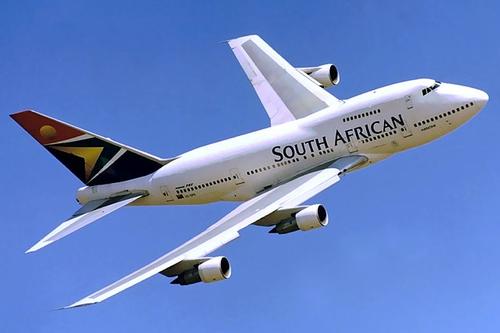 South African Airways, national airline of South AfricaPhoto: Bob Adams from Amanzimtoti South Africa, CC 2.0 Generic no changes made
South African Airways, national airline of South AfricaPhoto: Bob Adams from Amanzimtoti South Africa, CC 2.0 Generic no changes made
Sources
Dekker, M. / Zuid-Afrika
Gottmer/Becht
Luirink, B. / Zuid-Afrika : mensen, politiek, economie, cultuur, milieu
Koninklijk Instituut voor de Tropen,
Moerkamp, J. / Zuid-Afrika
ANWB
Schaap, D. / Zuid-Afrika
Minbuza Kosmos-Z&K
Zuid-Afrika
Cambium
CIA - World Factbook
BBC - Country Profiles
Last updated November 2025Copyright: Team The World of Info